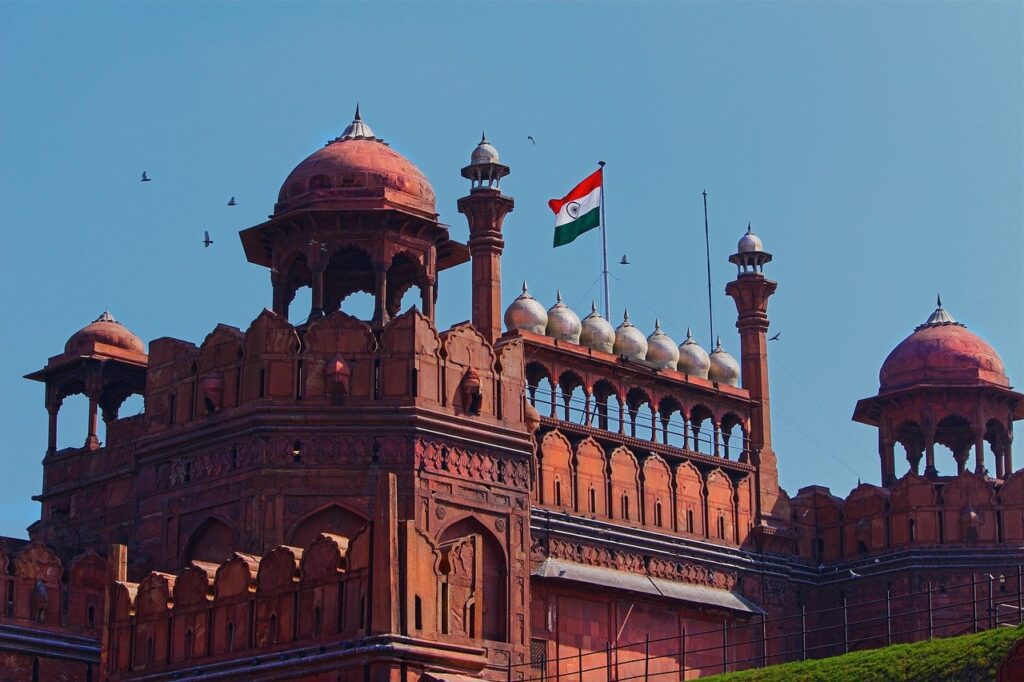A structural splendour, the Red Fort is a historic structure dating back to the time of the Mughal reign in India. It is located in the capital city of Delhi and is one of the favourite spots for tourists from around the country as well as abroad.

Red Fort has an elaborate history and is declared as a heritage of the world by UNESCO.
History of the Red Fort
It took eight years and eleven months to complete this sumptuous structure. The construction was ordered by Shah Jahan when he chose to move his capital to Delhi. Soon afterward the city was also renamed as Shahjahanabad.
The Genius Behind the Creation
This architectural wonder was the idea of a talented engineer Ustad Ahmad Lahori. The man is also known to have designed the Taj Mahal, one of the Seven Wonders of the World. The Red Fort is a well-built structure that served as the residence of the imperial family for more than two hundred years. During the Revolt of 1857, the Red Fort served as a blockhouse.
The Secret Behind the Name “Red Fort”
The Mughals had named their abode as Qila-e-Mubarak, which directly translates to the Blessed Fort. The name “Red Fort” came much later. The Hindi name Lal Qila when translated to English becomes the Red Fort, where Lal means Red, and Qila, a Persian term, implies fortress.
The Fort acquired its name owing to its massive boundary walls of red sandstone and bricks that surround the entire structure. A large part of the structure made of white marbles and limestone, which was later painted red during the British times as it started to chip off.
Major Attractions in the Red Fort
Lal Qila is open to tourists round the year. There are numerous galleries inside the fort which showcase many artifacts of historical significance. While the entire fort is full of wonders, there are a few structures that serve as the major temptations of this elegant building.
The Lahore Gate
This is the primary gateway to the fort. The gate overlooks the city of Lahore and hence the name. Since 1947 the Indian flag is being raised on the barricades of this massive gate on Independence Day.
Diwan-i-Khas
It was the hall for political meetings with the “Khas” or the special guests of the emperor. It is this hall where Shah Jahan’s majestic throne was placed. The throne was decorated with gold and the Kohinoor diamond, one of the largest diamonds worldwide.
Rang Mahal
The spouses and other female escorts of the King had this palace to themselves. The entire Mahal was covered in bright colours and adorned with a pastiche of mirrors. The only male allowed inside was the emperor. Nahr-i-Bihisht was the source of water for the central pool.
Mumtaz Mahal
The Mahal was constructed for Arjumand Banu Begum, the favourite wife of Shah Jahan. It now holds the Archaeological Museum for the tourists.
Hammam and Baoli
The Hammam is the public bathing structure and a part of the Islamic culture. For the Mughals, this was the royal bath having three dome structures covered in white marble.
Baoli is another creation, known as the Wonder Well of the fort. Historians believe its existence dates back to times before the Mughals moved into India. The well was accessible through staircases, one coming from the North and the other from West direction. The cells of the Baoli were later transformed into jails by the British.
Conclusion
The Red Fort houses some of the most exquisite gardens, palaces, and mosques that have inspired many structures in the later years. The profound work of Ustad Lahori is a must-visit when in Delhi.

Pingback: Agra Fort - The Original Seat of Mughal Power - Auchitya